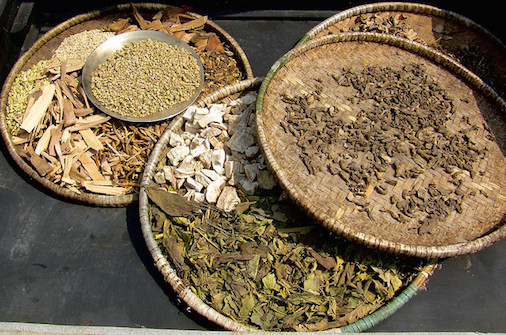
by Tirtha Acharya | Apr 11, 2018 | Yoga, Ayurveda, Yoga Therapy, yoga training and yoga courses
Ayurveda is a type of ancient system of medicine. It has historical roots in the Indian subcontinent. Today, Ayurveda traditions is a type of alternative medicine. It is also a complementary medicine due to globalization and modern practices. Medical professionals are integrating Ayurveda therapies and practices in general wellness applications and in medical use. Since ancient times, Nepali people are using Ayurveda. In this article, we explore Ayurveda in Nepal.
The word “ayurveda” means “life-knowledge”. The central theoretical ideas of Ayurveda was developed in the mid-first millennium BCE, and show parallels with Sāṅkhya and Vaiśeṣika philosophies, as well as with Buddhism and Jainism. In Ayurveda balance is emphasized, and suppressing natural urges is considered unhealthy and claimed to lead to illness. Ayurveda in Nepal is just about these balance and suppression.
Human beings are part of nature. Ayurveda describes three fundamental energies that govern our inner and outer environments. In addition to that movement, transformation, and structure. In Sanskrit is called as Vata (Wind), Pitta (Fire), and Kapha (Earth). These primary forces are responsible for the characteristics of our mind and body. Each human being has a unique proportion of these three forces that shape their nature. If Vata is dominant in our Ayurvedic Consultation system, we tend to be thin, light, enthusiastic, energetic, and changeable. If Pitta predominates in our nature, we tend to be intense, intelligent, and goal-oriented and we have a strong appetite for life. When Kapha prevails, we tend to be easy-going, methodical and nurturing. Although each of us has all three forces, most people have one or two elements that predominate.
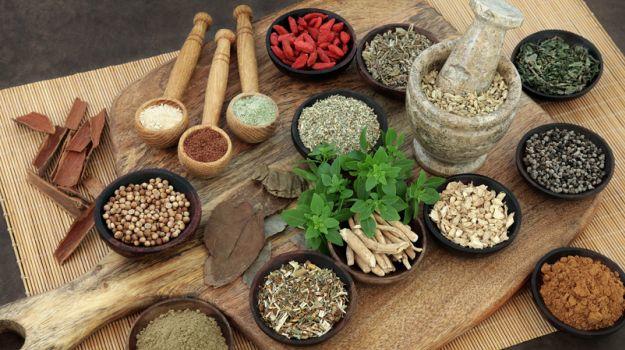
Ayurveda in Nepal has a glorious history. Nobody knows since when Ayurveda in Nepal is present. There is no official record about Ayurveda and its reach in Nepal. But Ayurveda in Nepal exists since ancient time. In addition to that festivals and rituals also have some kind of Ayurveda flavor. Nepali people use Ayurveda to prevent diseases. The theories and philosophies are described in Ayurveda in Nepal. All of the above facts show that there is a long tradition of Ayurveda in Nepal. It has the long and deep attachment to Nepali culture. Ayurveda in Nepal is a social and cultural therapy.
In the current time, people are fed up with this congested, synthesized and unnatural environment. People want to return back to nature. This reversed path has also affected the treatment system in Nepal. Nepali have started to be conscious about their health. They have started to think about the food they eat and the medicine they use. In addition to that, they prefer natural things over synthesized and unnatural things. Ayurveda is also a natural therapy since it interrelates the living body to biological, mental and spiritual activities. It also prescribes the natural herbal and metallic medicine. We can take such medicines from our surrounding. People prefer Ayurveda in Nepal and its products. Numbers of visitors to the Ayurveda in Nepal have dramatically increased during these years.
Benefits of Ayurveda in Nepal
- The main benefit of the Ayurveda treatment is that it has no side effects. We prepare Ayurveda products by using the essence of fruits, spices, vegetables and natural herbs. These natural ingredients help in curing diseases without causing any other problem.
- The treatment of Ayurvedic treatment may not be fast but it is very effective. Ayurvedic treatments effective in the permanent cure of the disease.
- Ayurveda has successfully been able to cure and manage diseases like Piles, Rheumatoid arthritis, Jaundice, etc.
- Ayurvedic products and medicines help in decontaminating our body and cleansing it through natural methods and practices
- The Ayurvedic products are environment-friendly as we prepare it from organic products. They don’t cause any harm to the environment and the surroundings.
Furthermore, Nepal Yoga Home is a pioneer yoga retreat in Nepal. We organize yoga training in Nepal and Yoga teacher training in Nepal. In addition to that, we also have courses that include meditation.
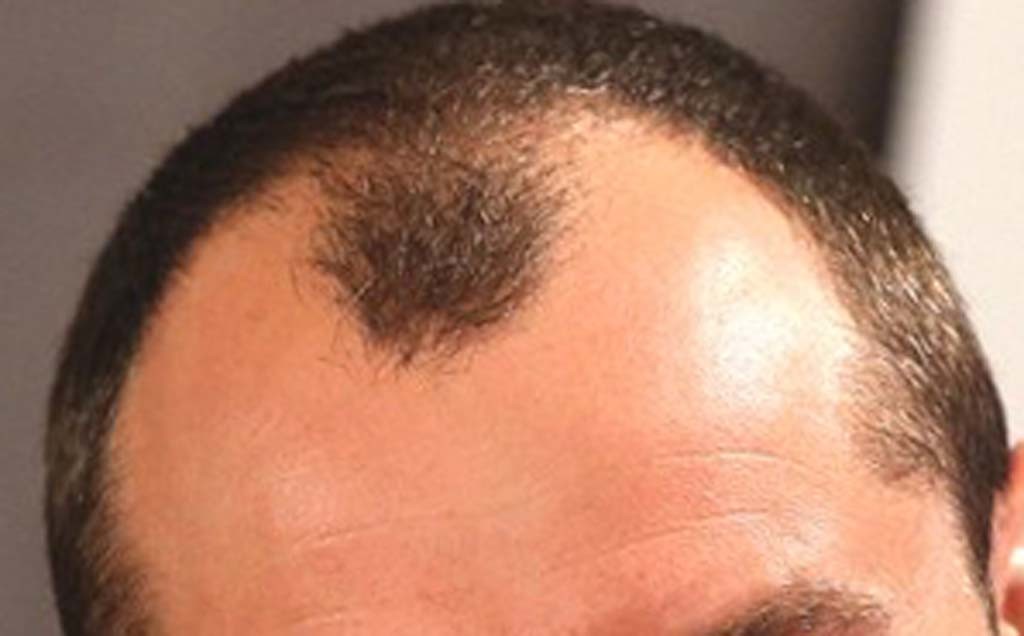
by Tirtha Acharya | Jun 23, 2017 | Ayurveda
Hair Fall and Ayurveda
Ayurveda does miracles in hair fall, and in the maintenance of healthy hair and scalp. In this article discusses the causes of hair fall and the steps to prevent loss of hair.”
Normal and Abnormal Hair Fall:- If there is a fall of more than 100 hair strands per day, it is considered as abnormal hair fall, less than that is considered as normal. However, there will be a fall of more than 200-250 hair strands after shampooing which is absolutely normal.
Causes of Hair Fall
• Lack of nutrition and iron deficiency.
• The hormonal imbalance like hypothyroidism, increased levels of androgen, PCOS.
• Scalp infection.
• An adverse effect of few drugs, after chemotherapy, surgery, and pregnancy.
• Polluted water.
• Mental stress and stress to the hair by repeated hair coloring, straightening, curling, etc.
• Ayurveda considers vitiation of pitta dosha as the cause of hair fall and premature gray hair. Increased intake of alcohol, tea, coffee, pickles, deep fried, spicy and also fermented foods, excessive anger and stress cause increased pitta in the body.
How to Prevent Hair Loss and Premature Gray Hair
• Eat healthy and nutritious food rich in copper, iron, and calcium.
• Avoid aerated drinks and junk foods.
• Increase the intake of fresh fruits, green leafy vegetables, milk, amla, pomegranate, dry grapes, dates, almonds, and spinach.
Daily Hair Care
Cleanliness
• Wash your hair every two days.
• If you live in a highly polluted area and there is more perspiration, do it every alternate day.
• Wash your comb and hairbrush regularly. Never share other’s comb and hairbrushes.
• Use lukewarm or room temperature water for hair wash. Never use hot water.
Proper Combing
• Always use blunt-toothed combs.
• Gently comb the hair and scalp daily.
• Never do vigorous brushing, as it stretches the hair causing breakage and split ends.
• Combing the scalp is an effective way to relax as it increases blood circulation and spreads the natural oil evenly over the hair strands which keep your hair healthy and also promote hair growth.
Massage
• Regular head massage is essential for healthy hair and scalp.
• Apply lukewarm essential oils like bhringraj (Eclipta prostrata) etc, and massage the scalp with your fingertips gently.
• Make sure that scalp is rotated under the fingertips with mild pressure placing the thumbs behind the ears.
• Never do vigorous rubbing as it causes unnecessary hair fall.
• Head massage ensures good blood circulation, hair growth, relieves stress and induces good sleep.
Shampooing
• Always use herbal shampoo diluted in water to wash the hair or prepare homemade shampoo with shikakai, reetha, alovera,tulasi,methi, triphala,yasthimadhu etc. which removes the dirt, dandruff, without irritating the scalp, retains natural oil, does conditioning and promotes hair growth.
• Harsh chemical based shampoo strips the protein layer and natural oil from scalp and hair making them dry and dull.
Mental Relaxation
Overcome the stress by yoga, meditation and try to have sound sleep.
Reduce Unwanted Stress on the Hair
• Reduce the hair stress by avoiding tight hairstyles, ponytails, unnecessary hair coloring, straightening, curling and repeated combing.
• Use natural hair dyes.
Hair Treatments
• There are various therapies (like Shiro abhyanga, Shirodhara, Shiro lepa, nasya, etc), medicaments, hair growth supplements (like triphala, swamala, etc), hair oils in Ayurveda for prevention of hair fall, premature gray hair, dandruff and to get lengthy, thick, lustrous hair.
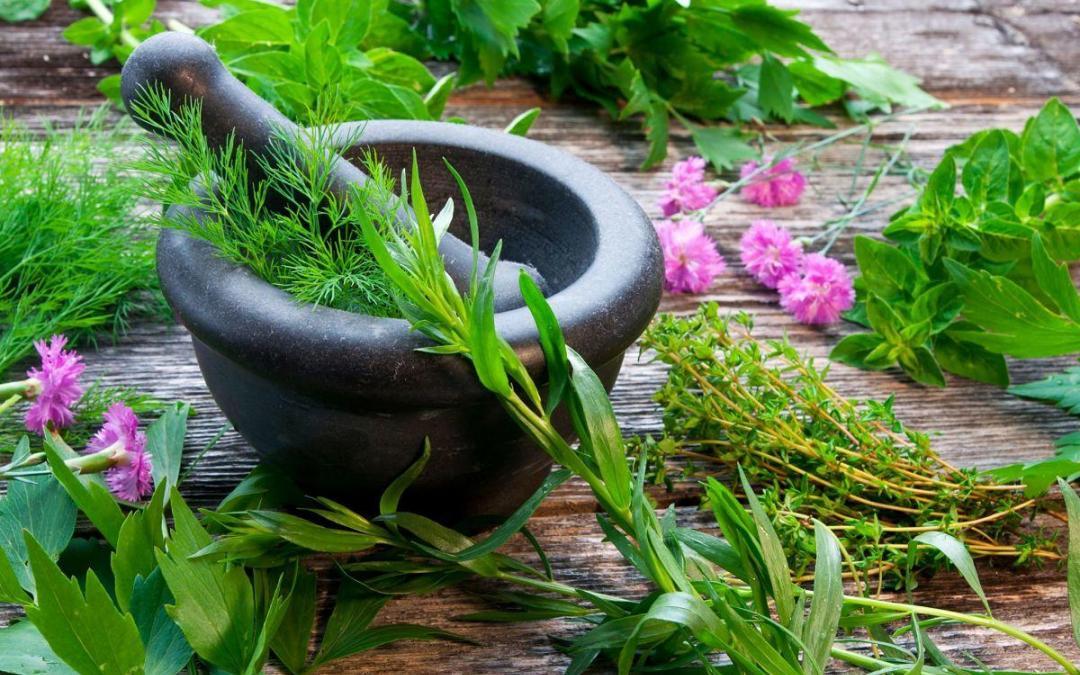
by Tirtha Acharya | Jun 23, 2017 | Ayurveda
Stress Healing & Body Cleansing: A miracle of Ayurveda
Fast paced life, skipping breakfast/lunch/ dinners, Chinese/ fast foods/ junk food cultures, busy schedules, sleepless nights, competition & complexity of Today’s World- in this process of hectic growth we subject ourselves to all kinds of unlimited physical & mental stresses.
Besides stress & fatigue, an accumulation of toxins can interfere with the normal functions of the body. After 25 or 30 high levels of toxins, also accelerate the rate of degeneration of the body. The human body is no different to a vehicle, which needs constant care & servicing.
Ayurveda brings about the balance between our physical & mental aspects and helps us to remain naturally beautiful. Herbs of tremendous medicinal values are found abundantly in nature. Ayurveda uses these herbs individually and in special blends to treat every kind of physical & psychological problems.
As the stress builds up, we move towards the lack of confidence and a feeling of inferiority becomes a part of our life. Lest the thorn / the cause/ the toxins/ stress is removed only when the normal healing mechanism of the body is initiated or else it affects the other organs of the body & thus incurable diseases are produced.
Skin, the largest organ in our body directly reveals the energetic level of the entire psychophysical unit; it is a transparent mirror where the movement of the doshas brings about changes also of a radical nature in its biochemical balance. Skin is the expression of our overall state of health; this stress invariably affects it. The diseases of the skin like psoriasis, eczema, dandruff, lichen planus etc. occur due to this stress.
For males as young as 25, multiple late nights and unlimited stress can lead to a diminished sexual desire, premature ejaculation, erectile dysfunction, impotence, low sperm count, semen discharge with urine and the damaging feeling of inferiority accompany with all these sexual problems. The same stress factor in females will lead to low sexual desire, infertility, and loosening of breasts etc.
5000 years old ancient wisdom of Ayurveda has a lot to offer for millions of people to combat stress, the effects of which are often associated with skin, sexual health of the individuals. Since times unmemorable, Ayurveda has been advocating many rejuvenating recopies for improving & maintaining good health, which leads to a normal and happy life thus improving the deficiencies without any side effects.
Treatment procedures mainly involve the changing of nutritional protocol & lifestyle by which we can greatly influence our physical, mental & emotional health. While each patient should follow a regimen tailored to his/ her individual needs, the five classical procedures are meant to detoxify the human body- THE PANCHAKARMA CHIKITSA-are particularly beneficial. They are:
1) VAMANA: a medicated emesis therapy cleanses Kapha collected in the body & decongests the respiratory tract.
2) VIRECHANA: a medicated purgation therapy, removes toxins from the body that are accumulated in the gastrointestinal tract.
3) VASTHI: cleanses the accumulated toxins from all over the body. It is also highly beneficial in rejuvenation therapies.
4) NASYAM: nasal administration of medicated oils to cleanse accumulated Kapha dosha from the head & neck regions.
5) RAKTHA MOKSHANAM: bloodletting using leeches etc effective in hematological conditions.
Once the toxins are removed and the body is purified from doshas responsible for causing the diseases then rejuvenation procedures & therapeutic massages are beneficial. Judicious combinations of scientifically standardized drugs having rejuvenating correcting imbalances are administered for the promotion of a healthy normal living of the person.
Rejuvenation procedures include
1. A simple ABHYANGA (Massage) revives body, mind, senses and the soul, increasing energy levels and thus promotes the feeling of well-being. 2.SIRODHARA in which medicated oils are streamed on to the forehead, relaxes the central nervous system, melting away all the stresses & strains.
3. Medicated oil bath-(Sarvanga Dhara/ kaya Seka) provides the ultimate rejuvenation and increases the circulation around the body.
4.SHIRO VASTI (Holding medicated oil in a Cap over Head)- It prevents and cures hair fall, head diseases and promotes a healthy life.
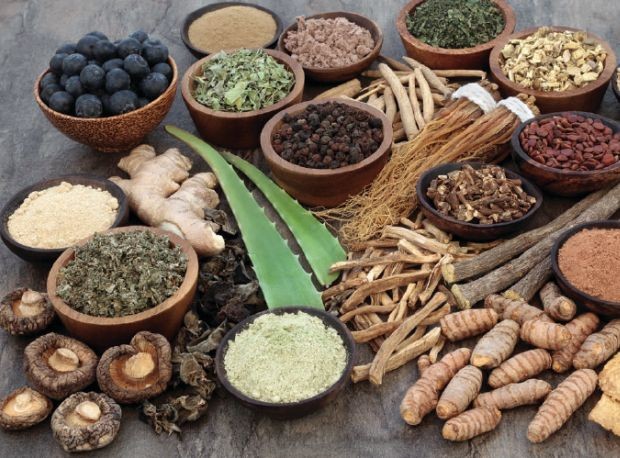
by Tirtha Acharya | Jul 30, 2016 | Ayurveda
Ayurveda is a traditional system of healing and health practiced widely in Nepal and Indian subcontinent. Literally, it is a Sanskrit term consisting of two words: ‘Ayu’ meaning ‘life’ and ‘Veda’ meaning ‘knowledge or science’. Thus Ayurveda roughly translates as ‘knowledge or science of life’. Indeed, it is a practical science that explores life in all its layers. As a holistic system of medicine, it pays more attention to quality of life rather than its quantity. It presents health as harmony among body, mind and spirit. It aims to provide proper guidance regarding diet and lifestyle to promote health as well as herbal and herbo-mineral medications to cure the ailments.
Ayurveda is in fact, an intricate system of healing that is believed to be originated since Vedic time. Actually, there are four major books of Vedas which deal with various aspects of life viz. Rigveda, Samveda, Yajurveda and Atharvaveda. Among these, Rigveda is considered to be the oldest scripture known to mankind believed to be written some 10,000 thousand years ago. Abundant discussion on the basic principle of Ayurveda i.e. the Tridosha Principle is found in this book. Apart from this, Reference to various herbs used in curing different ailments can also be found in this ancient literature. However, the major references of Ayurveda are found in Atharvaveda and it is for this reason that Ayurveda is considered as Upaveda(supplementary) of Aatharvaveda. This knowledge is believed to be gained through deep meditation and passed to subsequent generations by cognition through oral transfer. The various methods of healing encompassed by Ayurveda such as prevention, longitivity and surgery came through divine revelation. So, Ayurveda embraces not only science but spirituality and philosophy as well. In its truest form, Ayurdeda is a science of truth as it is expressed in life.
According to Ayurveda, we all are a unique individual made up of five basic elements that form every matter in this universe: Ether, Air, Fire, Water and Earth. Ether element in the body is manifested by the spaces like buccal cavity, thoracic cavity, abdomen etc. Air element is expressed in the form of movement within the body like heart beat, movement of lungs, peristalsis of gastrointestinal tract etc. Likewise, all the enzymatic and metabolic actions in the body are due to third element, Fire. All the liquid components of the body are the manifestations of the Water element. Lastly, the solid structures like bones, muscles, skin, hair etc. in the body are the expressions of Earth, the fifth element. The functions of sense organs in our body are also the manifestations of these five elements. Hearing function is related to Ether element while sense of touch is related to Air. Similarly, seeing is related to Fire, the sense of taste is related to Water and finally the sense of Smell is the manifestation of Earth element. Thus, our body is nothing more than these five elements.
While we are a composite of five basic elements, certain elements combine together in some proportions to produce various physiological functions in our body. This combination is fundamental to Tridosha Principle upon which the whole concept of Ayurveda system of healing and health is based. Ether and Air elements combine to form what is known as Vaata dosha in Ayurveda whereas Water and Earth elements combine to form Pitta dosha. Similarly, Water and Earth elements combine forming Kapha dosha. Vaata is basically a principle of movement. It is a force that directs nerve impulses, circulation, respiration and elimination. All the functions of nervous system are due to Vaata. Pitta dosha is responsible for all the metabolic processes in the body. It transforms the food we intake into nutrients that our body can be assimilate. It is Kapha dosha that provides physical as well as biological strength, vigor and stability to the body. In this way,these three humors or doshas control all the biological, psychological and physiopathological functions in the human body. These are the basic human constitutions which in balanced state provide positive health and if the balance is disturbed, become reason for occurrence of various diseases.
Ayurveda views that the basic constitution of each individual is different that is determined from the time of conception. Hence, in Ayurveda, treatment protocols are designed specifically to treat the person rather than a disease. It always aims to establish balance among bodily doshas in order to cure any ailment by recommending specific dietary and lifestyle guidelines along with certain herbal, mineral or herbo-mineral medications if required. Panchakarma is the unique concept in Ayurveda to eliminate all the accumulated toxins in the body through different cleansing procedures, thereby uprooting the disease from its base.
To conclude, Ayurveda is the vast ocean of knowledge about life. Through its good understanding and application, one can not only attain better health but acquire the optimum quality of life. So, it’s all up to us to explore this miraculous life-science for the common benefit of ourselves and greater good of mankind as a whole.
History of Ayurveda
Ayurveda was originated from the time immortal. If there is life, there is a chance of having disease. Hence, to remain healthy and cure disease whenever we fall ill Ayurveda was introduced in this world by Lord Brahma (Hindu god of creation) along with the origin of life. Then Lord Brahma transferred the sacred knowledge of Aurveda to Dakshaprajapati (his son) and Dakshaprajapati to Ashwinikumars (God’s physician) and so on until it arrived to the king of heaven, Lord Indra. Ayurveda was within the heaven until that period.
On the other hand, people on Earth were caught by different diseases. The condition was deteriorating and they were helpless. Eventually, they gathered up and decided to take the refugee of the holy saints who were meditating on the lap of Himalayas of present day Nepal. After seeing the suffering of the people caused due to the disease the quickly managed a discussion and decided to send Bhardwaj (one of the senior Rishi) to the heaven to learn the knowledge of Ayurveda with Lord Indra (king of heaven) and bring it on the Earth. This is how Ayurveda descended onto the Earth.
After that Ayurveda had developed by seers (rishis or yogi) and natural scientists through centuries of observations, discussions, meditation for many years. Yogis (rishis) while they are practicing yoga-meditation in Jungle and cave, there is no chance of doctor and hospital then they start to search the different herbs in jungle then their experience and research become rebirth of ayurveda. We can get old history of ayurveda more than 5,000 years ago. It stems from the ancient Vedic culture and was taught for many thousands of years in an oral tradition from accomplished masters to their disciples. Some of this knowledge was set to print a few thousand years ago, but much of it is inaccessible.
Ayurveda Scholars and their treatises
Ayurveda can be broadly classified into 2 schools on the basis of their specialties. 1st is medicine based “Atreya” school and the other is surgery based “Dhanwantari” school. Later, Atreya leaded medicine school was further flourished by his disciples like Agnivesa, Bhela, Jatukarna etc. Among them, Agnivesa is more remembered for his greater contribution of initiating to write the present day “Charaka Samhita”, the most famous treatise of Ayurveda. It was later explained and redacted by Acharya Charaka under whose name the book was named Charaka Samhita. The book consists 8 volumes and 120 chapters in totality. Acharya Charaka denied residential lifestyle of saints and adopted traveller lifestyle.
The other school is Dhanwantari school which is surgery predominant. “Dhanawantari” word itself has a meaning “who is good on Surgery”. Later, one of the disciple of Dhanwantari, “Susruta Senior” initiated to write the surgery based treatise called “Susruta Samhita”. It was later explained and redacted by “Susruta Junior” and other different Acharyas(scholars). Susruta Samhita consists 6 volumes and 120+66 chapters. There were only 120 chapters in the original Susruta Samhita and later, Acharya Nagarjuna added 66 chapters on the original book. Acharya Nagarjuna had done a lot of research on use of metals in medicine preparation with a long penance being on the jungle nearby Kathmandu, Nepal and hence, the jungle is famous by the name, “Nagarjuna jungle”.
The 3rd important scholar in Ayurveda is “Acharya Vagbhata”. He mixed the knowledge of medicine based “Charaka Samhita” and surgery based “Susruta Samhita”, added some of his own medicinal knowledge and finally prepared a book called “Astanga Sangraha”(collection of 8 branches of Ayurveda). Later, he collected the cream part of “Astanga Sangraha” and wrote another book called “Astanga Hridaya”(heart of the 8 branches of Ayurveda). The combination of these 3 big treatises of Ayurveda viz. Charaka Samhita, Susruta Samhita and Astanga Hridaya are famous by the name of “Greater Triad”.





